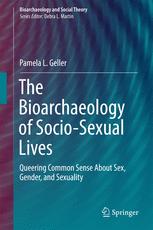

Most ebook files are in PDF format, so you can easily read them using various software such as Foxit Reader or directly on the Google Chrome browser.
Some ebook files are released by publishers in other formats such as .awz, .mobi, .epub, .fb2, etc. You may need to install specific software to read these formats on mobile/PC, such as Calibre.
Please read the tutorial at this link: https://ebookbell.com/faq
We offer FREE conversion to the popular formats you request; however, this may take some time. Therefore, right after payment, please email us, and we will try to provide the service as quickly as possible.
For some exceptional file formats or broken links (if any), please refrain from opening any disputes. Instead, email us first, and we will try to assist within a maximum of 6 hours.
EbookBell Team

0.0
0 reviewsThis volume uses bioarchaeological remains to examine the complexities and diversity of past socio-sexual lives. This book does not begin with the presumption that certain aspects of sex, gender, and sexuality are universal and longstanding. Rather, the case studies within—extend from Neolithic Europe to pre-Columbian Mesoamerica to the nineteenth-century United States—highlight the importance of culturally and historically contextualizing socio-sexual beliefs and practices.
TheBioarchaeologyof Socio-Sexual Lives highlights a major shortcoming in many scholarly and popular presentations of past socio-sexual lives. They reveal little about the ancient or historic group under study and much about Western society’s modern state of heteronormative affairs. To interrogate commonsensical thinking about socio-sexual identities and interactions, this volume draws from critical feminist and queer studies. Reciprocally, bioarchaeological studies extend social theorizing about sex, gender, and sexuality that emphasizes the modern, conceptual, and discursive. Ultimately, The Bioarchaeology of Socio-Sexual Lives invites readers to think more deeply about humanity’s diversity, the naturalization of culture, and the past’s presentation in mass-media communications.